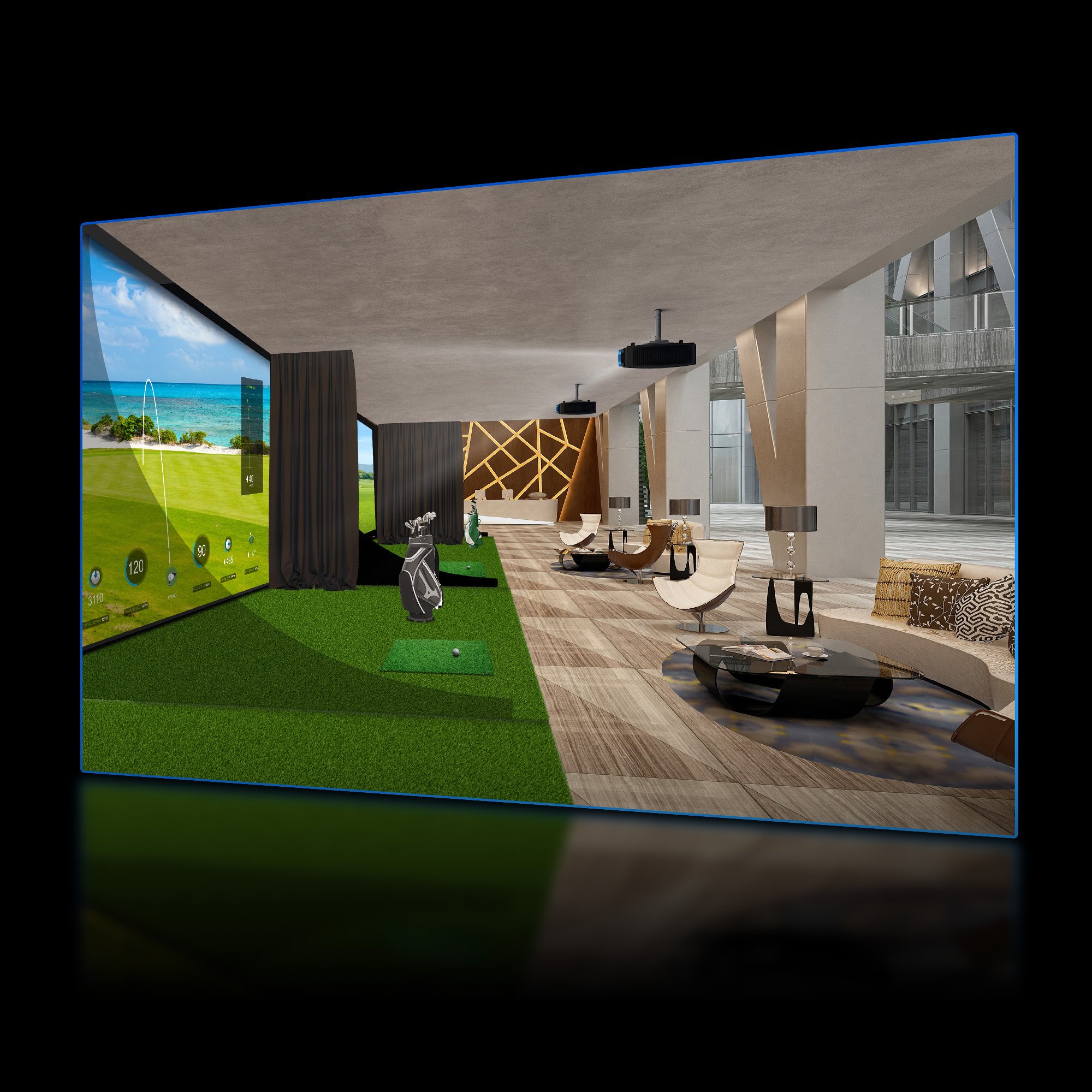For the Bustling Dynamics of Commercial Venues
Enhancing hotel amenities, as well as the cozy confines of home environments
It embodies a complete golfing experience that not only captivates guests but also sets your establishment apart in the competitive hospitality landscape. Far more than a leisure activity, BenQ Golf Simulation Projector enables a transformative gameplay experience, adding a distinctive edge to your offerings and elevating the customer experience profoundly.
Hotel Amenities
Upgrade your hotel amenities with BenQ's comprehensive golf simulation solution and enhance guest experiences.

○ Designed for both avid golfers and guests seeking unique leisure options.
○ Boosts satisfaction and encourages repeat visits.
○ The LU935ST model is perfect for enhancing guest experiences with exclusive indoor golf amenities.
Beyond delivering a high-end projector, BenQ’s indoor golf set ensures an immersive golfing experience with unmatched color accuracy and realistic visuals, setting your hotel amenities apart as a premier destination for luxury and engagement.



Sport Bars
BenQ’s Golf Simulator Projector goes beyond enhancing the viewing experience

○ Adding a dynamic aspect where customers can actively engage in thrilling games.
○ The superior graphics ensures a realistic and immersive gameplay experience.
○ Increasing customer engagement and potentially boosting both foot traffic and the duration of their stay.

Gyms and Fitness Centers
Incorporate a golf and sports simulation system

○ Offer members varied exercise options that combine fun with focused training.
○ Enriches the exercise experience, drawing a broader clientele.
○ Enhancing membership value with its engaging, educational approach to fitness.



Corporate and Residential Spaces
BenQ’s indoor golf set is designed to enrich communal areas

○ Transform corporate facilities and residential complexes by integrating a complete golf simulation setup.
○ Strategic investment in leisure and relaxation spaces aimed at enhancing employee productivity and fostering community engagement.

Golf Academy
Incorporate the BenQ Golf Simulator Projector into your academy to revolutionize traditional training methods.

○ Educators can offer a blend of theoretical and practical learning experiences.
○ Provides students with a comprehensive understanding of golf mechanics, enhancing their skills in a controlled, immersive environment.
○ Precise analytics and vivid display transform any space into an optimal learning arena, setting a new standard.


於 01.01-03.31 期間產品註冊,將於 2024.4.25 公布

In-home Recreation
Transform any home into a dynamic entertainment space with our golf simulation equipment.

○ A flexibility to set up a personalized golf experience.
○ Suitable for DIY enthusiasts or those preferring professional installation.
○ Perfect for movie nights, making it a versatile addition to living space.
Without focusing on specific regions or the size of the home, our solution is designed to meet the diverse needs and lifestyle preferences of homeowners globally, offering a seamless blend of leisure and entertainment.


Effortless Setup
It offers a large horizontal/vertical lens shift for effortless installation, enabling up to 60% vertical and 23% horizontal image adjustment. Coupled with 3D keystone correction, it ensures precise image alignment, making setup a breeze.

Flexible Installation
The projector adapts to any environment with various mounting choices, including ceiling and side projection. Its short-throw capability and adjustable aspect ratio guarantee full projection coverage in diverse spaces.

Seamless Connectivity
Equipped with HDMI 2.0 and DisplayPort 1.2a, BenQ Golf Simulator Projector ensures easy and versatile connection options for various devices.

Enhanced Visual Performance
BenQ Golf Simulator Projector offers up to 5,100 ANSI laser lumens for bright, vivid images in any light. Its laser diodes are precisely aligned to maximize brightness, while the durable DLP chip, protected against heat, ensures over 20,000 hours of clear, maintenance-free visuals.

Enhanced Color Accuracy
Tailored for golf simulations, the Golf Mode in our projector fine-tunes color settings to authentically reproduce the vivid greens and blues of the golf course. This mode corrects color aberrations and reduces unnecessary purples, ensuring the natural appearance of the sky and grass. The result is a significantly improved visual experience that brings every detail of the course to life with exceptional clarity. Explore our LU960ST2 model for peak performance.

4K Display Technology
Our 4K golf simulator delivers ultra-sharp, detailed images, rendering each golf course with precise realism. This high-definition clarity enhances every visual aspect, from the grass's texture to the landscapes' expansiveness, for an immersive golfing experience. For instance, the LK936ST projector for golf simulator delivers unparalleled clarity.
Enthusiast series

Top selling model designed for custom built Golf simulators.

Suitable for customer DIY setup with various useful installation features.

Designed for Effortless Adjustment and Easy installation in limited space

Short-throw, flexible installation, and cost-effective: BenQ is the golf projector to choose!
Build a personal golf course at home

golfGT & Relaxsh, Indoor Golf Simulation and Personal Stretching Complex Facility in Japan

Trackman iO and the Best Golf Simulator Projector for the Ultimate Golf Experience

Setup Your Home Golf Simulator Projector in 10 Sec: BenQ Auto Screen Fit

Why a 4K Projector Delivers the Most Realistic Experience when Playing on a 4:3 or 16:10 Golf Simulator Setup

Upgrade your educational tools this semester with a brand-new Indoor Golf Set or Golf Simulation Projector and enjoy exclusive educational discounts from BenQ. Take advantage of this offer to bring cutting-edge technology into your teaching environment, enhancing the learning experience for your students.
Transform your setting with our advanced Golf Simulator Projector
Immersive Entertainment
Meets Interactive Sophistication
Designed for those who appreciate refined leisure, it brings the golf course to life with stunning clarity and realism. Discover a new standard in home or commercial entertainment that blends seamlessly into your lifestyle.
Begin your journey to exceptional entertainment. Reach out to our team of golf simulator experts and explore how BenQ Golf Simulator Projector can enhance your space.


















